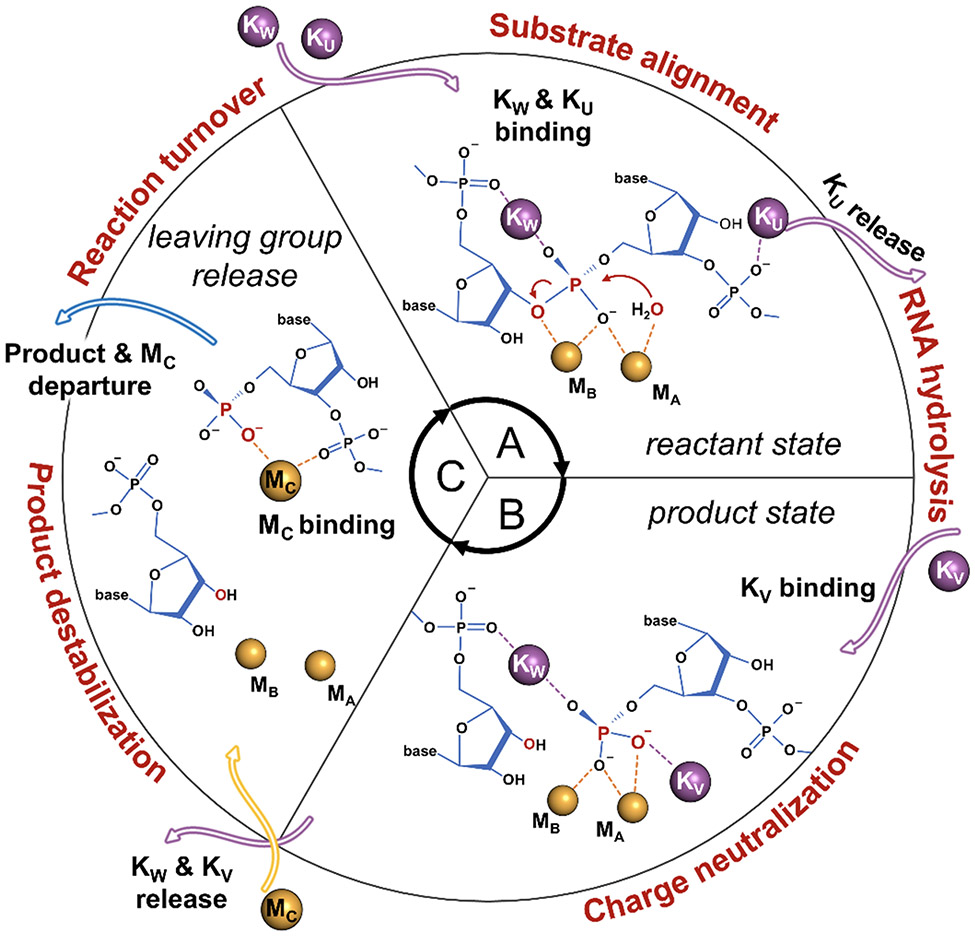Figure 6.
Controlled cations trafficking favors RNase H1 catalysis. (A) In the reactant state, KW and KU prompt the alignment of the substrate. At this point, KU is released and the RNA hydrolysis can occur. (B) Upon hydrolysis (i.e., product state), the negatively charged product is neutralized by KW and another KV ion. (C) The ultimate exchange of these two K+ ions with a third Mg2+ ion (viz. MC) promotes the destabilization of the products, which are then released together with MC to induce the reaction turnover and the continuation of catalysis.

